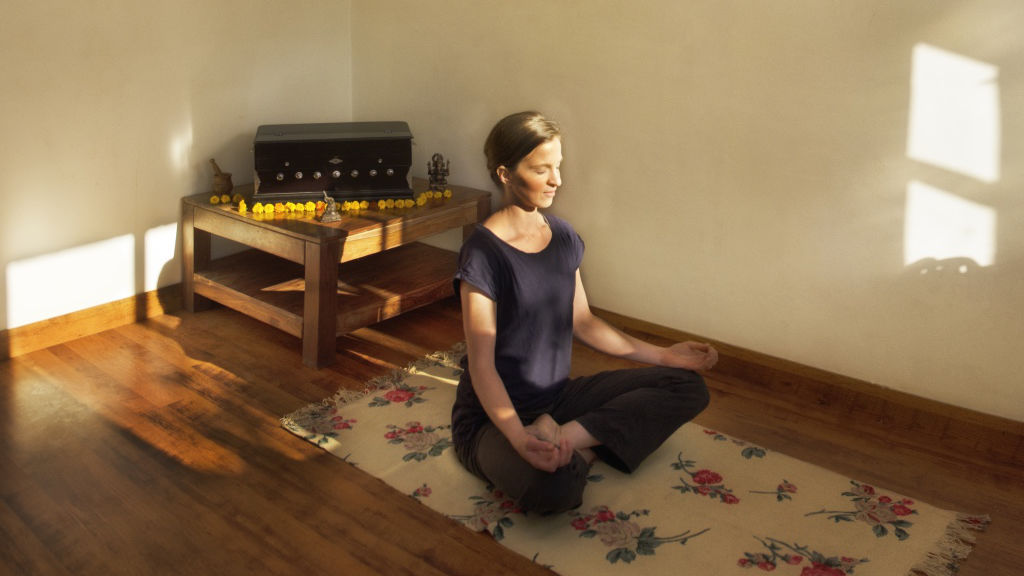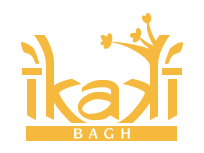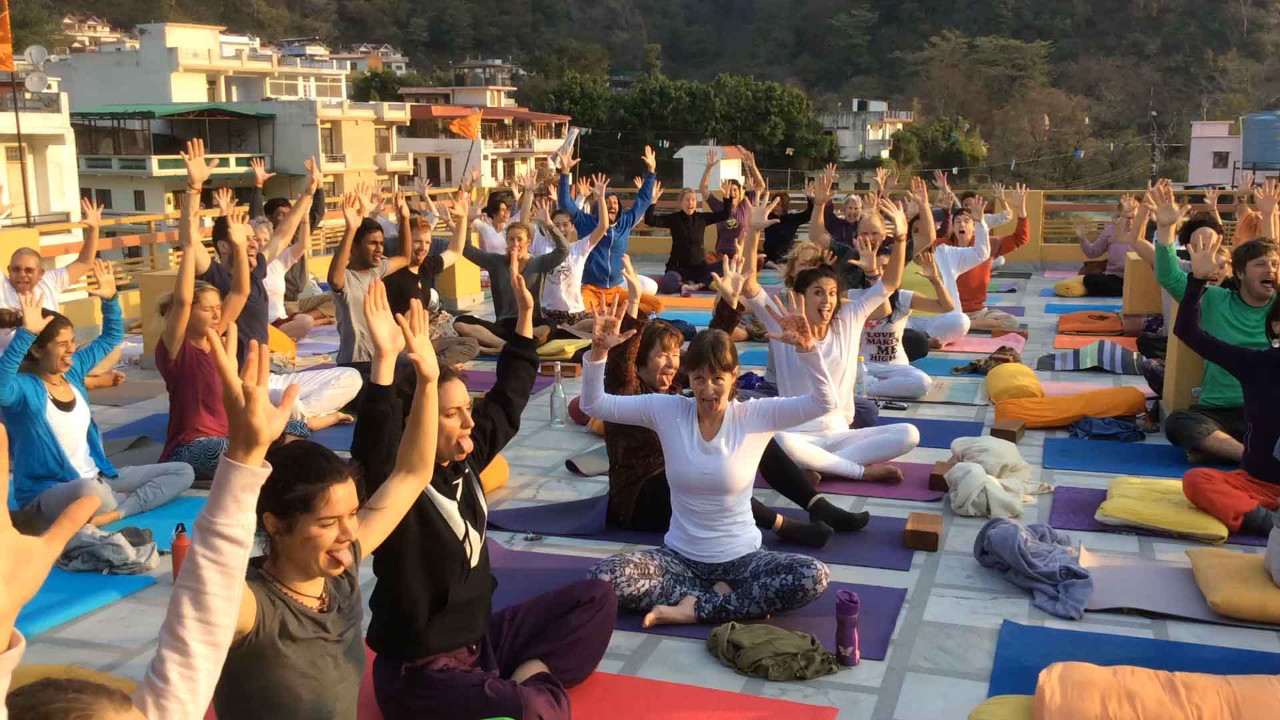
Yoga: the practice and at Ikaki Bagh
Key points
- The beginnings of Yoga were developed by the Indus Saravasti civilization in Northern India over 5,000 years ago.
- Traditionally, the practical aspects of Yoga play a more important part than does its intellectual content.
- The Yoga process is set out in eight stages (ashtanga-yoga).
- Jaideo Rathore, owner of Ikaki Bagh is a lifelong Yoga practitioner. Yoga offered at Ikaki Bagh and Ikaki Niwas is based on his own practice.
Historical Origins of Yoga
Yoga’s origins lie in some of Hinduism’s oldest religious texts. The word ‘yoga,’ is first mentioned in the ‘Vedas’. The Vedas are a collection of texts containing songs, mantras and rituals. These were used by Brahman priests, the protectors of Hindu learning across generations.
The Bhagavad Gita, a seven hundred verse scripture, is one of the most renowned Hindu Yogic texts. It contains the core concept of teaching the sacrifice of ego. This is achieved through self-knowledge, action (karma yoga) and wisdom (jnana yoga).
Patanjali, a sage in Ancient India is acknowledged as an author of essential Sanskrit works. Extensive scholarship and debate are devoted to the identity of Patanjali. It is generally accepted he authored the Yoga Sutras, a classical yoga text, in the second century.
The Yoga-Sutras set out what is commonly described as ‘classical yoga’. This systematic presentation of yoga organizes practice into an eight-staged path. These are considered the steps towards obtaining Samadhi, or enlightenment.
Patanjali is often considered the father of yoga. His Yoga-Sutras strongly influence most styles of modern yoga.
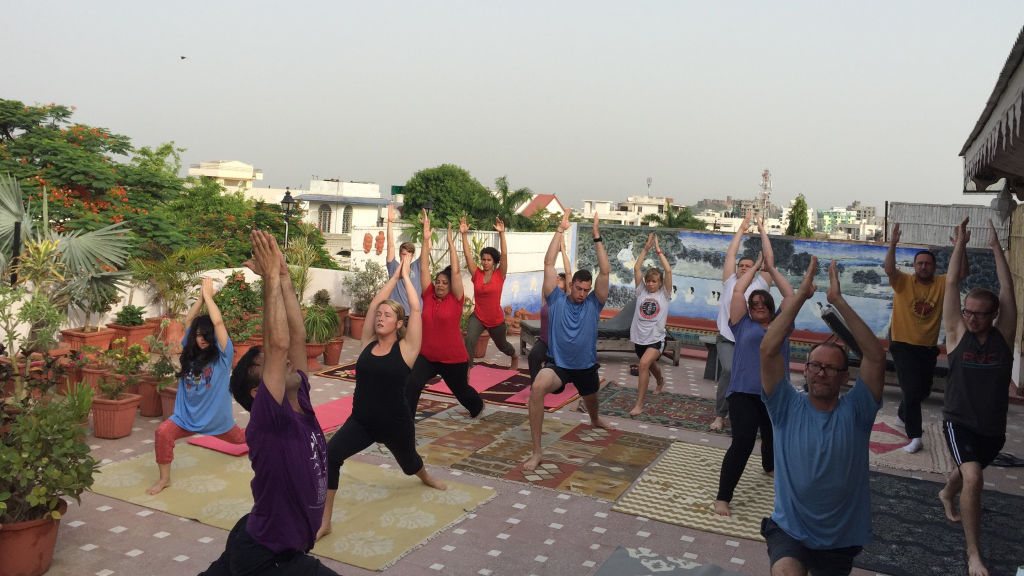
The Eight Stages of Yoga
Experienced yoga teachers have learned the eight stages of yoga. These are then selectively drawn upon in their classes and teaching practice. These are often in a way not as obviously define or noticeable, as when laid out systematically here.
The first two stages are ethical preparations:
- Yama (restraint), which denotes abstinence from injury, falsehood, stealing, lust, and avarice, and
- Niyama (discipline), which denotes cleanliness of body, contentment, austerity, study, and devotion to God.
The next two stages are physical preparations. These will be especially familiar to modern practitioners:
- Asana, a series of exercises in physical posture, is intended to condition the body and make it supple, flexible, and healthy. The aim is to hold one of the prescribed postures for an extended period without involuntary movement or physical distractions.
- Pranayama (breath control) is a series of exercises intended to stabilise the rhythm of breathing. They encourage complete respiratory relaxation.
The fifth stage, Pranayama, (withdrawal of the senses), involves control of the senses, or the ability to withdraw the attention of the senses from outward objects.
The first five stages are external aids to Yoga. The remaining three are purely mental or internal aids.
- Dharana (holding on) is the ability to hold and confine awareness of externals to one object for a long period of time. A common exercise is fixing the mind on an object of meditation.
- Dhyana (concentrated meditation) is the uninterrupted contemplation of the object of meditation, beyond any memory of ego.
- Samadhi, (total self-collectedness) is the final stage and is a precondition of attaining release from samsara or the cycle of rebirth. In this stage the meditator perceives or experiences the object of their meditation and themselves as one.
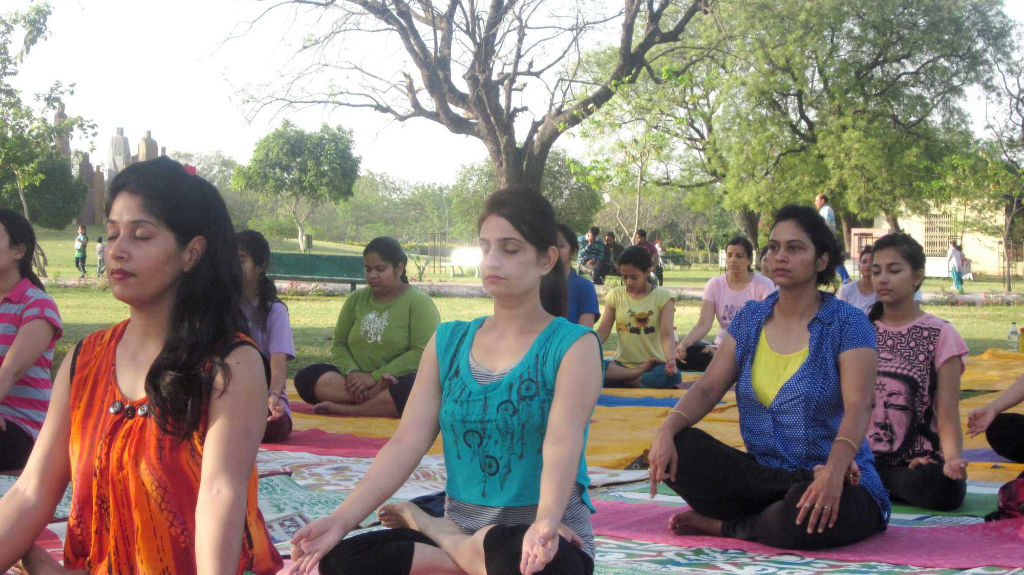
Yoga at Ikaki Bagh: restorative, energising, and beautiful
Yoga has been popular among guests at Ikaki Niwas https://ikaki.in/niwas/, the boutique hotel owned by Jaideo Rathore (Ikaki Bagh Founder) in Jaipur.
Free daily yoga sessions are offered at Ikaki Bagh for all staying guests. The program is based on Jaideo’s personal life-long practice. Jaideo describes the program as one that,
“Introduces guests to yogic asan. I have developed this model which can be done anywhere without any gadget or anyone’s help.
I am personally following a Yoga ritual and have developed a series of asanas and breathing patterns Pranayam, which will be offered to guests on daily basis. It will be an hour session which will have Yoga Asanas and Pranayam strength in yogic forms.
I want to teach this to everyone as doing all this in one hour you are sorted for whole day. 15 minutes of guided meditation.”
Guests can also take an individual specialized session with a yoga instructor. These sessions can be fully customized to all levels of skills and experience. Respectful visits to a local sacred temple are also available.
